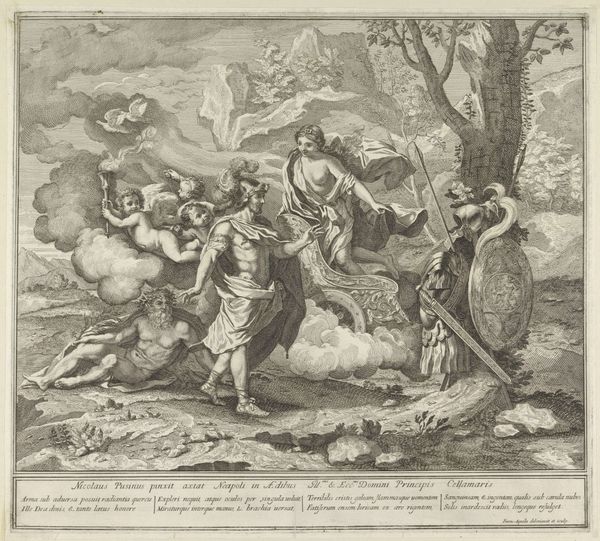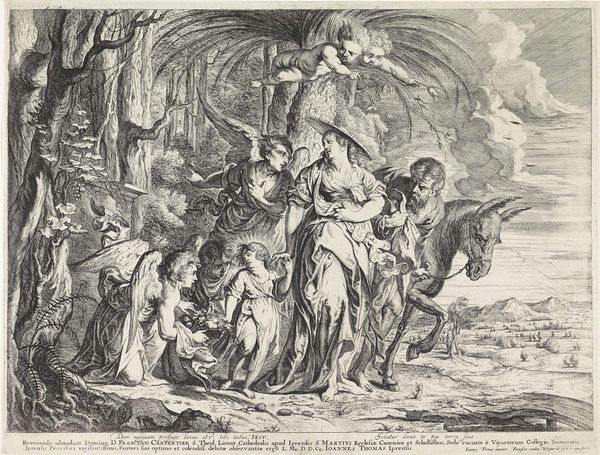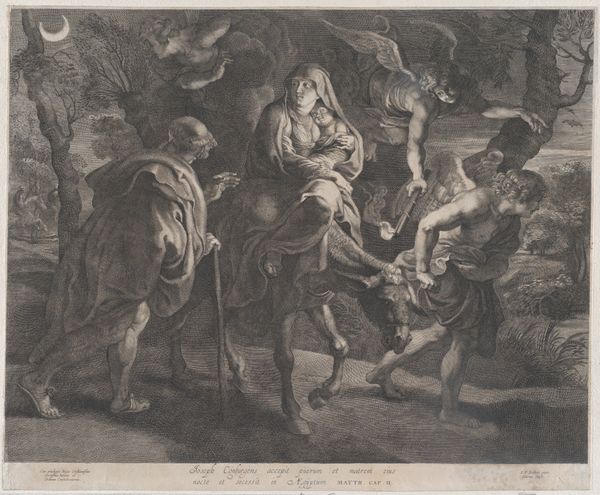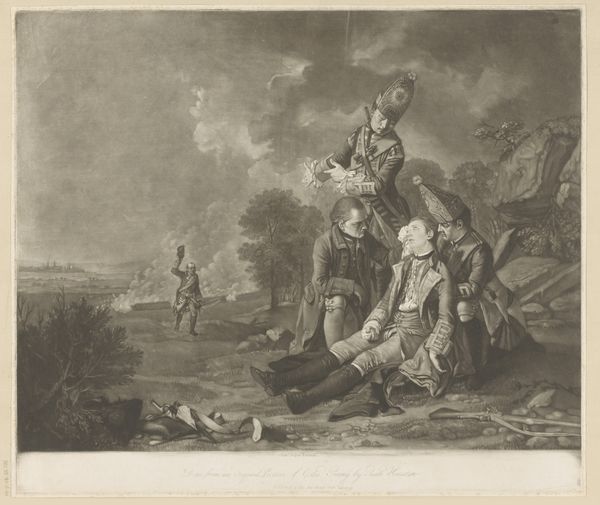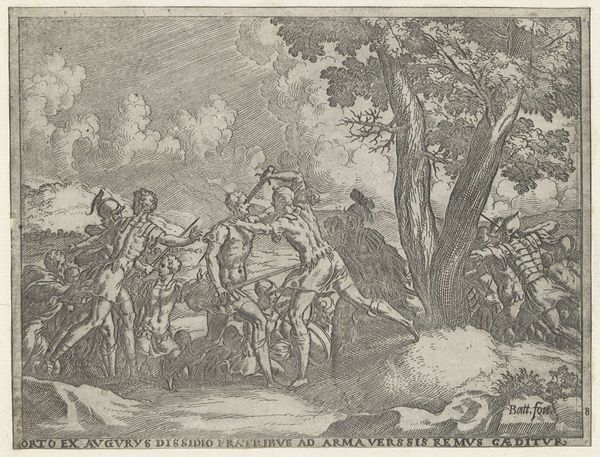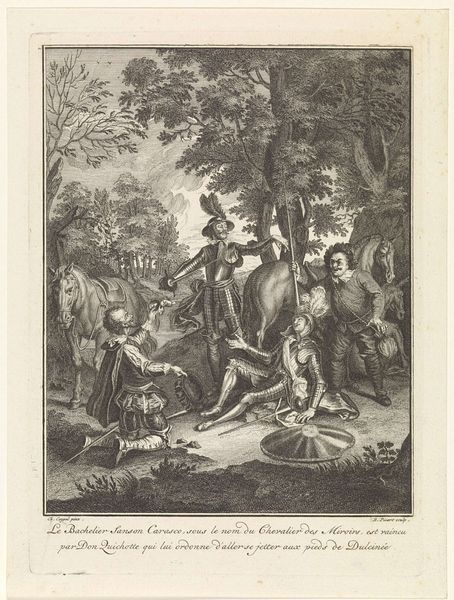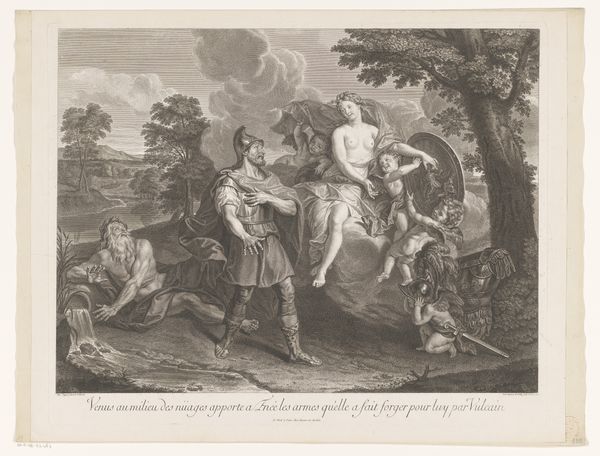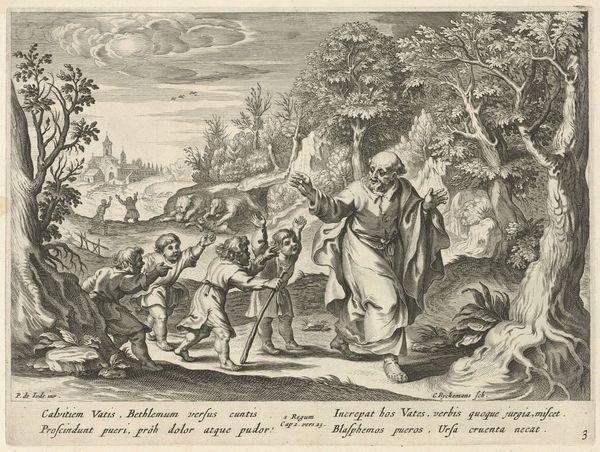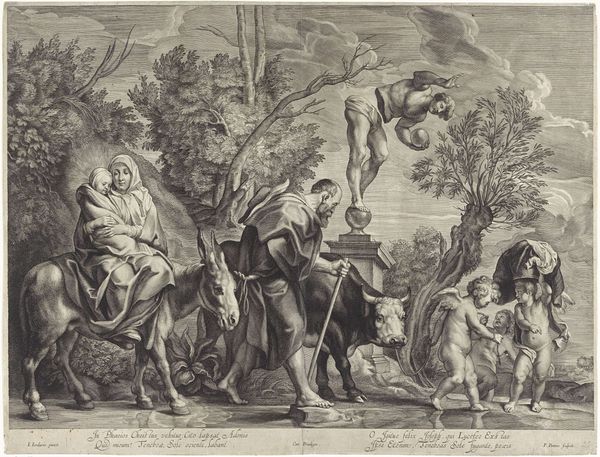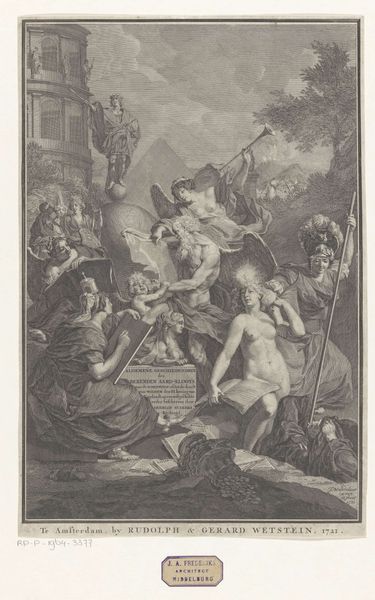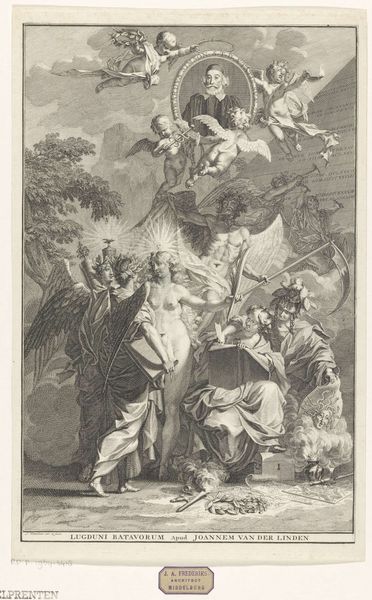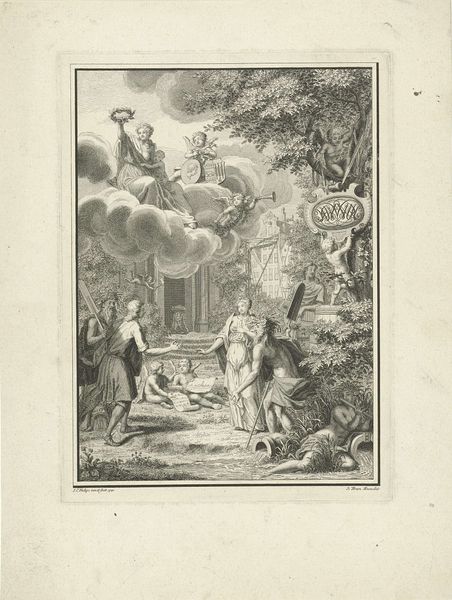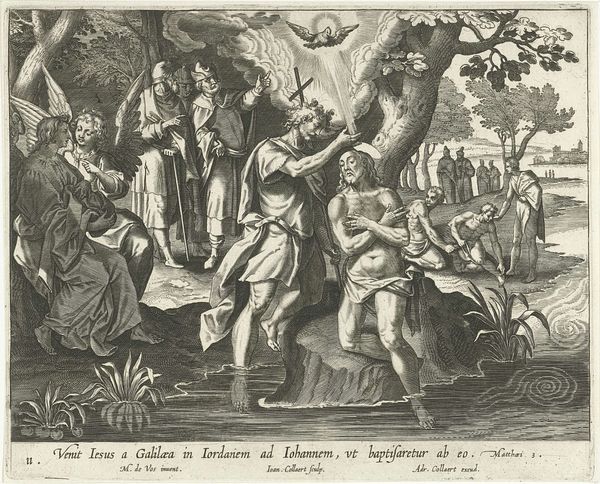
print, engraving
#
narrative-art
#
baroque
# print
#
landscape
#
figuration
#
history-painting
#
engraving
Dimensions: height 336 mm, width 443 mm
Copyright: Rijks Museum: Open Domain
Curator: Before us, we have Cornelis Galle I's "The Flight into Egypt," likely created sometime between 1586 and 1650. This engraving captures a significant moment from the New Testament. Editor: It's immediately striking how the figures are lit, isn't it? A dramatic contrast of light and shadow against that vast landscape... There’s real intensity there. Curator: Absolutely. Galle’s rendering uses the landscape not just as background but to evoke emotional qualities, it serves as a reflector of displacement, if you will. Think about it, this image symbolizes so many lived realities experienced by many—families being torn apart and fleeing persecution to seek a new existence somewhere else. The looming, dark aspects speak of the anxieties permeating such disruption. Editor: I agree about that displacement, but it's not just about Galle channeling feelings, but it’s equally about the technical production here; this Baroque period was a watershed era for engravings and printing; the way the ink hits the page allows for great range. Looking at the textures alone - Joseph's strong leg muscles in the forefront pulling, in juxtaposition with the aged lines of Joseph is quite compelling in its depiction of the generational expectations placed upon the family. Curator: Interesting you point out those visual-material dichotomies between young and old, that echoes perfectly how faith often acts as a guide amid great turbulence and generational change. Here is a vulnerable mother and child escaping danger to start afresh on their path—a recurring motif of maternal survival amid the darkest eras. Editor: And you can see the material effect of their displacement: how their cloaks weigh and shield them against the elements. It’s compelling how it makes what’s unseen palpable. What do you make of the decision to highlight this nocturnal setting? It's intriguing that that the holy family have divine support. Curator: Presenting the journey in darkness reinforces the urgency and fear involved. But within that darkness, the light surrounding Mary and Jesus—that divine presence, as you said—it's not only comforting but also reinforces their divine mandate, in defying these oppressive conditions. Editor: This print really showcases how something produced mechanically still possesses a striking sensitivity, and reveals that there are a lot more stories to unearth than you would think at first glance. Curator: Indeed; seeing this print allows for us to examine historical narratives of persecution—while also remembering the continuous struggles of refugees even today. It becomes a space where art, history, and contemporary concerns can intersect powerfully.
Comments
No comments
Be the first to comment and join the conversation on the ultimate creative platform.
